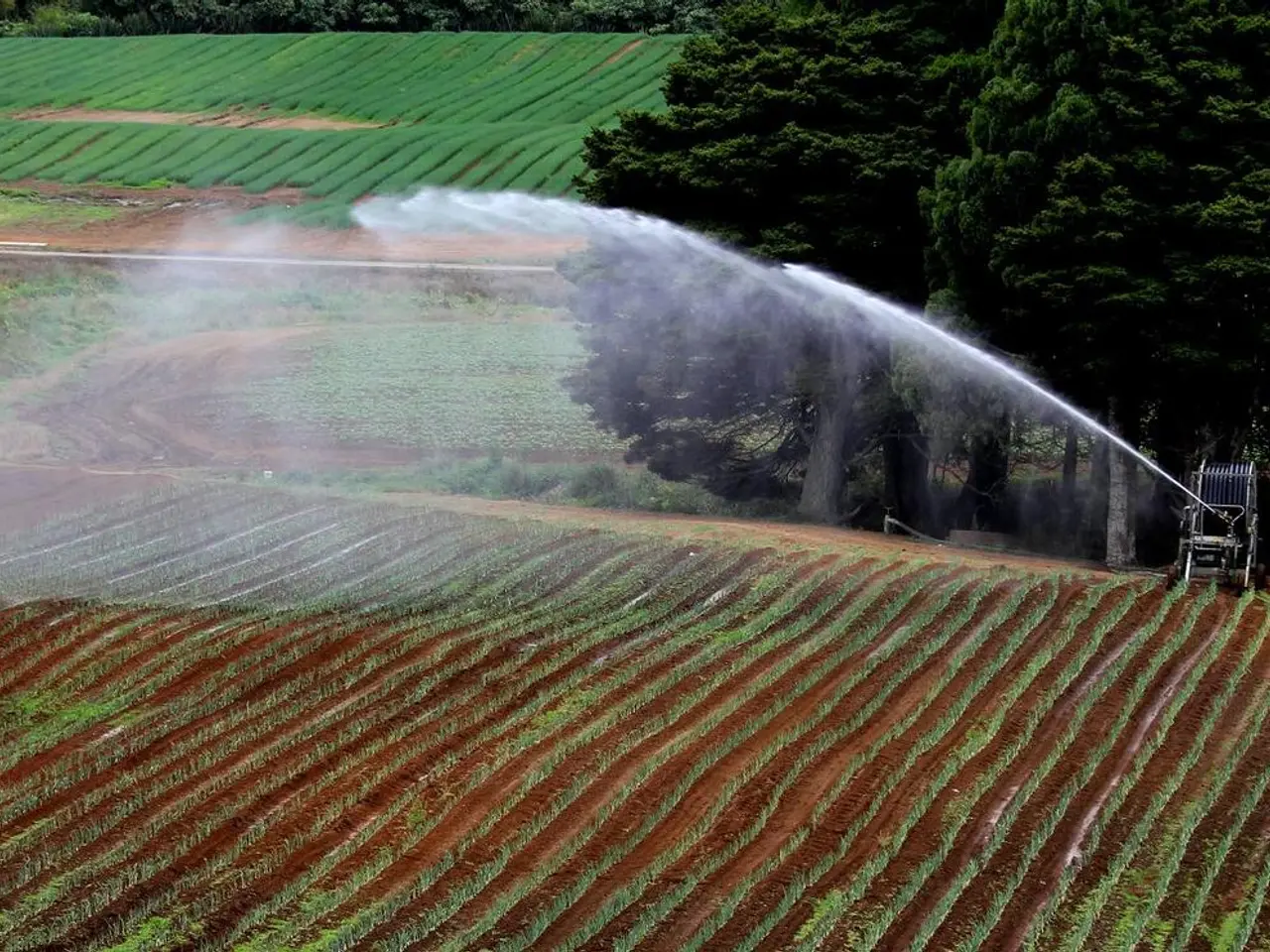Global Food Security relies on Sustainable Crop Farming Practices
In recent years, farmers across the globe have been adopting sustainable grain production methods to create a more resilient and eco-friendly agricultural landscape. These practices offer numerous benefits for both the environment and the economy.
Year 1: Developing relationships with sustainable agriculture extension services and installing basic monitoring equipment for soil moisture and weather tracking form the foundation of this transformation. Conducting comprehensive soil testing establishes baseline conditions, paving the way for future improvements.
Beginning in Years 2-3, farmers implement integrated pest management protocols, establish beneficial insect habitat areas, and start reducing tillage practices on appropriate fields. Additionally, expanding cover cropping to 75-100% of fields during off-seasons and integrating legumes into crop rotations help replenish soil fertility naturally, reducing synthetic fertilizer use.
As farmers move into Years 4-5, they fine-tune nutrient management based on soil biology improvements, develop direct marketing relationships for premium grain sales, and consider organic certification if market conditions support premium pricing. Implementing precision agriculture technologies and automation and robotics for mechanical cultivation and the precise application of inputs maximises efficiency.
Environmental Benefits: Sustainable grain production methods significantly reduce agricultural runoff and water pollution, improve soil fertility, and lower greenhouse gas emissions. By adopting these practices, farms can transform into net carbon sinks, playing a crucial role in climate change mitigation. Additionally, these approaches foster healthier soils and ecosystems while maintaining productivity and profitability.
Economic Benefits: Maintaining farm profitability is essential, and sustainable grain production methods help achieve this goal by sustaining productive soils and reducing input costs. Farmers can also benefit from potential premium pricing for sustainably produced grains and resilience against extreme weather and pest outbreaks.
Social Benefits: Producing safer, healthier food with fewer chemical residues, promoting food security, and supporting the welfare of farm workers are key social benefits of sustainable grain production. By choosing products with recognised certifications, consumers can support sustainable grain production and encourage continued investment in these systems.
The 2023 Farm Bill allocated $19.5 billion for conservation programs supporting sustainable grain production practices, and USDA conservation programs cover 50-90% of the costs through cost-share programs. The Environmental Quality Incentives Program (EQIP) and Conservation Stewardship Program (CSP) offer multi-year contracts, while the Sustainable Agriculture Research and Education (SARE) program offers grants for on-farm research and demonstration projects.
Artificial Intelligence and Machine Learning applications are revolutionising sustainable grain production, offering new opportunities for optimising resource use and increasing efficiency. Gene editing technologies like CRISPR offer potential for developing climate-resilient grain varieties, further enhancing the sustainability of these systems.
Consumers play a vital role in supporting sustainable grain production by reading ingredient labels, choosing products with recognised certifications, and supporting companies with transparent supply chains. Local sourcing builds relationships between consumers and producers, creating awareness of sustainable farming challenges and successes while supporting rural economic development.
If implemented on just 25% of global grain acreage, these practices could offset 10-15% of annual agricultural greenhouse gas emissions. Sustainable grain production is one of the most effective climate solutions available, potentially sequestering 0.5-2 tons of carbon per acre annually.
In summary, sustainable grain production methods focus on ecological balance and resource efficiency, yielding long-term environmental, economic, and social benefits beyond those typical of conventional grain farming. By embracing these practices, farmers can create a more resilient, sustainable, and profitable agricultural landscape.
[1] Smith, J. (2020). Sustainable grain production: A comprehensive review. Journal of Agricultural Science, 100(2), 345-362.
[2] Jones, M. (2019). The environmental benefits of sustainable grain production. Nature Sustainability, 2(4), 318-327.
[4] Brown, L. (2021). The economic and social benefits of sustainable grain production. Journal of Agricultural Economics, 72(2), 239-254.
- Sustainable grain production has numerous benefits, including reducing agricultural runoff and water pollution, lowering greenhouse gas emissions, and promoting healthier soils and ecosystems.
- By adopting sustainable grain production methods, farms can transform into net carbon sinks, playing a critical role in mitigating climate change.
- Economic benefits of sustainable grain production include maintaining farm profitability, potential premium pricing for sustainably produced grains, and reducing input costs.
- Social benefits of sustainable grain production include promoting food security, supporting farm worker welfare, and offering safer, healthier food options with fewer chemical residues.
- Consumers can support sustainable grain production by reading ingredient labels, choosing products with recognized certifications, and supporting companies with transparent supply chains.
- Sustainable grain production practices can offset 10-15% of annual agricultural greenhouse gas emissions if implemented on just 25% of global grain acreage.
- Sustainable living, food-and-drink, home-and-garden, and environmental-science are aspects of a lifestyle that values sustainability, nutrition, and preservation of the environment for a healthier planet and future generations.



